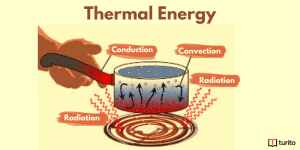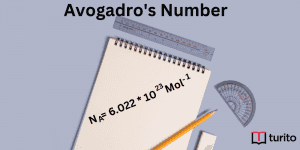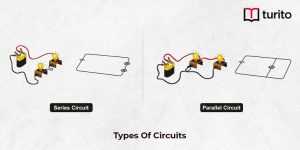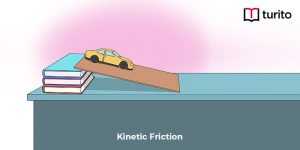Capacitor Types
Capacitors are one of the most important and fundamental components used in electrical circuits like inductors and resistors. It is a passive device available in a wide range of designs. Their classification is based on various factors described in this blog. Please read on to know more!
What is a capacitor?
A capacitor is an important and passive component used for the storage of energy in the form of an electric current. It is composed of two conductors separated with the help of dielectric material in the form of plates in which electric charge builds up. One plate carries a negative charge while the other carries a positive one.
The effect of the capacitor is called capacitance, and it is defined as the electric charge Qs ratio to the voltage V. Capacitance is represented by the following formula:
C = Q/V
Here,
Q stands for the electric charge, which is quantified in terms of coulombs
C stands for the capacitance, which is quantified in terms of farad
V represents the voltage across the plates and is measured in terms of volts
How are capacitors classified?
Various capacitor types are available in the market ranging from the ones that are very small and delicate like radio circuits to those that are large and metal-can type and utilized in smoothing circuits and for high voltage power correction.
Capacitors are classified on the basis of their structure into the following types— variable capacitors, trimmer capacitors, and fixe capacitors. They are also classified on the basis of their polarization into two types of capacitors— polarized and unpolarized capacitors.
Polarized capacitors are vital components of the electric circuit and are sometimes called electrolytic capacitors. They are used to achieve the capacitance of high density. However, unpolarized capacitors are generally preferred over polarized ones because they do not undergo damage and destruction because of reverse voltage. Also, they can be employed for use in pure alternating current circuits.
Unpolarized capacitors are also employed in direct current circuits as they do not have negative and positive ends. Their current leakage is low, while the frequency is quite high. Now that you are familiar with the classification of capacitors let us have a look at their different types.
Capacitor Types
Capacitors can be classified into two main mechanical groups— fixed and variable. As the name suggests, the capacitance value of the fixed capacitors is fixed while that of variable capacitors is variable. Below is a description of the different types of capacitors with their characteristics:
- Film Capacitors
- Ceramic Capacitors
- Electrolytic Capacitors
- Power Film Capacitors
- Paper capacitors
- Ceramic capacitors
- Tantalum capacitor
Ceramic Capacitors
This capacitor is probably the most commonly employed, and its main material is the dielectric. Additionally, they are non-polar devices, so that they can be employed for use in the circuit in any direction.
Symbol of a Ceramic Capacitor

These types of capacitors are divided into three groups on the basis of their availability— multi-layered surface mounts ceramic capacitors, lead-less disc microwave bare ceramic capacitors, and leaded disc ceramic capacitors. They are classified into the following categories on the basis of their temperature drift, temperature range, and tolerance.
Class 1 ceramic capacitors: Class 1 ceramic capacitors are regarded as the most stable types of capacitor and they have linear features.
Class 2 ceramic capacitors: The performance of these ceramic capacitors is better in terms of volumetric efficiency. However, their stability and accuracy are at stake. They are used in decoupling and coupling.
Class 3 ceramic capacitors: The volumetric efficiency of these ceramic capacitors is quite high as well, but their dissipation factor and accuracy are low. They find applications in decoupling.
Applications of Ceramic Capacitors
- These types of capacitor are employed for use in printed circuit boards.
- As they are non-polar, ceramic capacitors are feasible for general use.
- Also, as they are employed in reducing RF noise, they find applications in DC motors.
Film Capacitors
These types of capacitors are sometimes called plastic film, polymer film, or film dielectric capacitors. Their advantage is that they are cost-effective and usually have no limit to their shelf life. The film capacitor uses thin dielectric material while the other side is metalized. Based on the application, thin films are made from the film capacitor. These capacitor types have a general voltage range of about 50 V to 2 kV.
Symbol of a Film Capacitor

Film Capacitors Types
Depending on the applications and the dielectric materials employed, the classification of film capacitors is as follows:
- SMD style capacitors
- Heavy-duty snubber capacitors
- Radial style capacitors
- Axial style capacitors
Applications of Film Capacitors
- Film capacitors are employed in the form of safety capacitors. They also have applications in electromagnetic interference.
- The power film type of film capacitors is used in power electronics.
- Film capacitors are also used to safeguard appliances and other electronic devices from sudden increases in voltages.
- They are used to improve the device’s power factor.
Power Film Capacitors
The materials and construction techniques employed in this film capacitor are the same as those used in ordinary film capacitors. The dielectric used in the capacitor is made of polypropylene film.
Electrolytic Capacitors
In this type of capacitor, the dielectric is a metallic anode covered with an oxidized layer. These are polarizing capacitors and are classified on the basis of their dielectric.
- The aluminum electrolytic capacitors have aluminum oxide as the dielectric.
- The tantalum electrolytic capacitor has tantalum pentoxide as the dielectric.
- The niobium electrolytic capacitor has niobium pentoxide as the dielectric.
Symbol of an Electrolytic Capacitor

Applications of Electrolytic Capacitors
- These capacitors are employed when a large capacitance is required.
- They are employed as filtering devices that decrease the ripple voltage.
- They are employed in audio amplifiers to decrease the electrical noise that the main supply induces.
- These capacitors are employed in a DC signal with a weak AC component to smoothen the input and output signals.
Paper Capacitor
As called a fixed capacitor, the dielectric material in this type of capacitor is made of paper and stores a fixed amount of electric charge. It comprises two metallic plates, and in between these two plates, paper is placed as a dielectric material.
Symbol of a Paper Capacitor

Applications of Paper Capacitor
- These capacitors have applications in the coupling, noise filtering, and decoupling systems.
- They are employed to block the DC signals to allow the DC signals to propagate through.
- These capacitors are humidity sensors, fuel level sensors, etc.
- They are also employed in vehicles’ audio systems to impart extra power to the amplifiers.
Tantalum capacitor
Tantalum capacitors are polarized and offer a very high capacitance level for their volume, just like electrolytic capacitors do.
What are the common types of capacitors?
Capacitors can be classified into two mechanical groups— variable and fixed capacitors. Below are some common types of capacitors with their names.
- Film and paper type of capacitor
- Ceramic capacitors types
- Aluminum, niobium, and tantalum electrolytic capacitors
- Silver mica, silicon, glass, vacuum, and air-gap capacitor.
- Hybrid type of capacitor
- Polymer capacitors types
- Pseudo capacitors types
- Double-layer capacitors types
Values of a Capacitor
Now that you are acquainted with the types and applications of capacitors let us learn about their values. The value of a capacitor varies depending on its type. For instance, the values of an electrolytic capacitor are printed on its body along with the pins. In contrast, the values of a disc capacitor are represented by symbols like uF, PF, and KPF. A black band indicates the negative terminal of a capacitor.
The ways in which a capacitor type can be read are given below:
- A capacitor’s capacitance value is expressed in terms of picofarads.
- If the third number of a capacitor is zero, its value is expressed as P.
- If there are three digits in a capacitor, then the third number in it indicates the number of zeros in that capacitor type.
- If the values are in PF, their conversion from KPF to uF gets easier.
Conclusion
After going through the whole blog, you will be familiar with the different types of capacitors, their applications, and working principles. As capacitors are indispensable parts of an electric circuit, having knowledge regarding them is important from a Physics point of view.
Frequently Asked Questions
1.What kind of metals are used in a capacitor?
The plates of a capacitor are constructed using metals like silver and aluminum. In between these plates, dielectric materials made of ceramic, rubber, or paper are used, depending on what application it is used for.
2.How to analyze the quality of the capacitors?
A digital multimeter that is connected to the end of the plates of a capacitor is employed to analyze the quality of a capacitor. The negative end of this type of capacitor is linked with the multimeter’s black lead, while the positive end is linked with the red lead. The capacitor is said to be in good condition if the reading goes from zero to infinity.
3.What is the difference between a start capacitor and a run capacitor?
A start capacitor type is used when the current to voltage lag is needed. On the other hand, a run capacitor is employed to improve the supply of the current.
4.What is the polarity of the film capacitors?
As the film capacitors are non-polarized, they lack polarity.

Relevant Articles
Understanding Thermal Energy: What It Is and How It Works
Thermal energy is essential to our daily lives, from warming …
Understanding Thermal Energy: What It Is and How It Works Read More »
Read More >>Avogadro’s Number: Meaning, Importance, and More
Introduction The concept of measuring the microscopic particles that make …
Avogadro’s Number: Meaning, Importance, and More Read More »
Read More >>Kinetic Friction – Definition, Laws, Types
Kinetic Friction Kinetic force is a force acting between two …
Kinetic Friction – Definition, Laws, Types Read More »
Read More >>




















Comments: